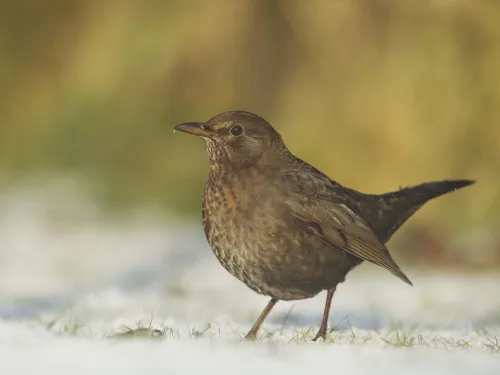
Blackbird
A much-loved garden bird, the blackbird is famous for its harmonious song. In winter, our resident birds are joined by migrants from Scandinavia and the Baltics.
Want to learn more about wildlife near you? You're in the right place, search below and discover the nature you can help protect in Kent.

A much-loved garden bird, the blackbird is famous for its harmonious song. In winter, our resident birds are joined by migrants from Scandinavia and the Baltics.

As the name suggests, the male blackcap has a black cap, while the female has a gingery one. Look for this distinctive warbler in woodland, parks and gardens.
A familiar shrub of hedgerows and woodland edges, blackthorn comes alive in spring when it bursts into a froth of white blossom. It is well known for its sloes, too - the blue-black fruits used in sloe gin.
Bladder campion is so-called for the bladder-like bulge that sites just behind the five-petalled flower - this is actually the fused sepals. Look for it on grasslands, farmland and along hedgerows.
This brown seaweed lives in the mid shore and looks a bit like bubble wrap with the distinctive air bladders that give it its name.
This large skate has tiny, prickly spines all over its back.
Bloody crane's-bill has striking magenta flowers that pepper our rare limestone pavements, grasslands and sand dunes with summer colour. It is a favourite of all kinds of insects, including bumblebees.
The bloody henry starfish is normally a bright purply-red colour and is found all around the UK.

The common name of the Bloody-nosed beetle derives from its unusual defence mechanism: when threatened, it secretes a distasteful blood-red liquid from its mouth. This flightless beetle can be found on grassland and heathland, and along hedgerows.
Often confused with the larger but similarly shaped lion’s mane jellyfish, the blue jellyfish can be colourless when young and develop a striking blue-purple bell as it matures.
It's easy to see where the blue shark got its name from. These sleek, elegant sharks have beautiful metallic blue backs which provide brilliant camouflage out in the open ocean.

A familiar garden bird, the blue tit can be seen around bird tables and feeders, as well as in woodlands and parks. Listen out for its trilling, 'tsee-tsee-tsee' song. It is smaller than the great tit.